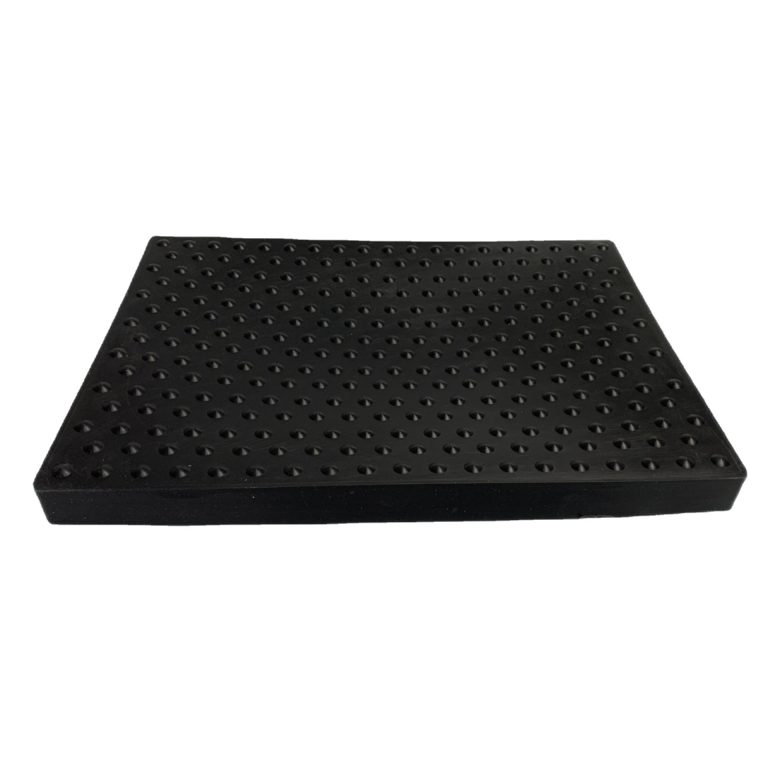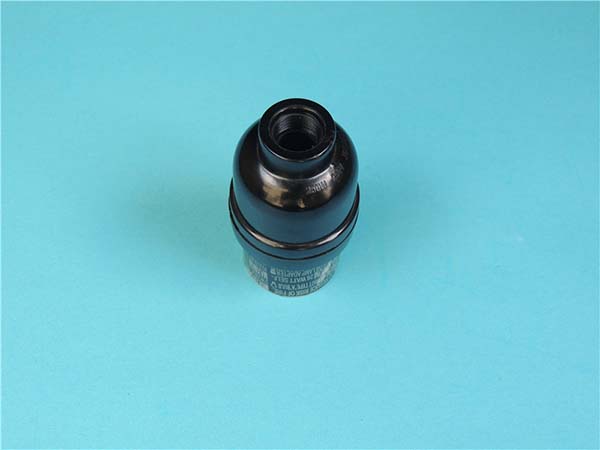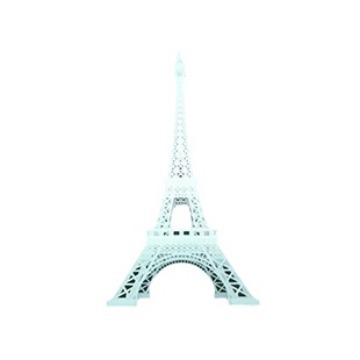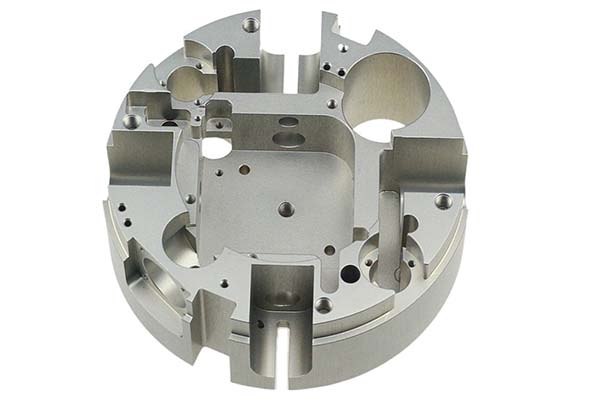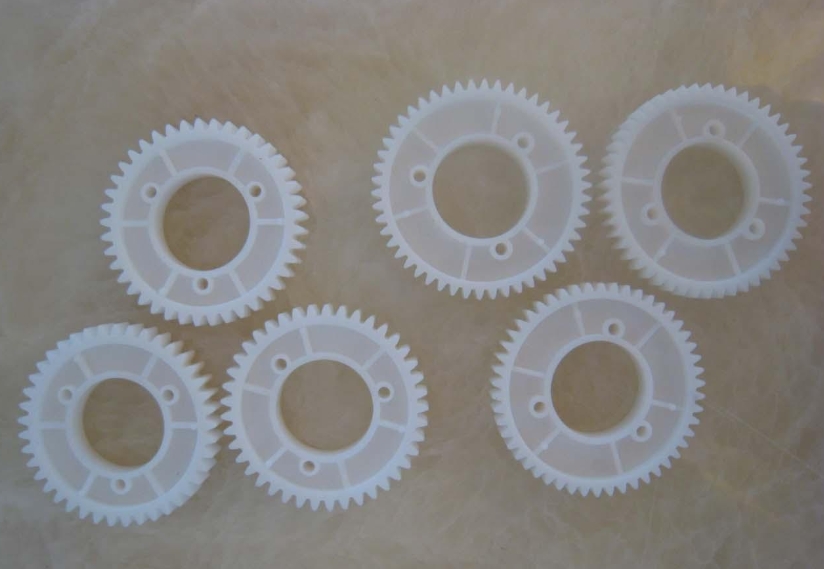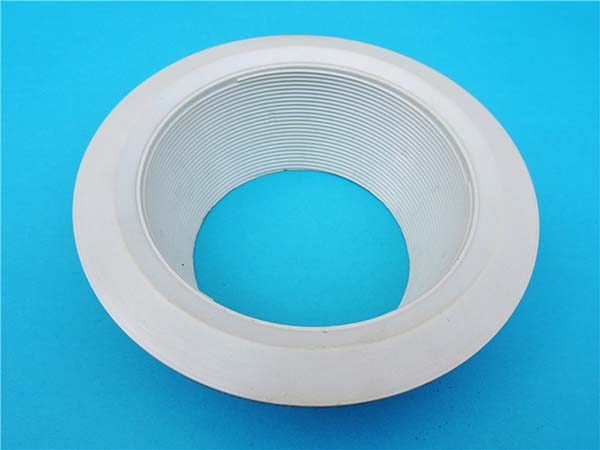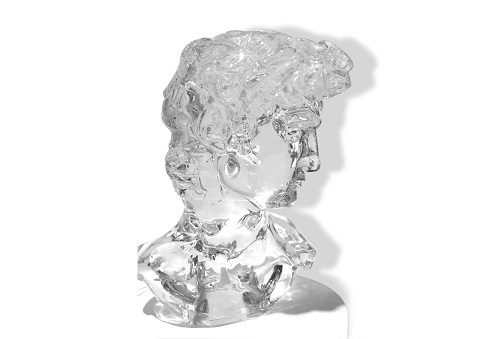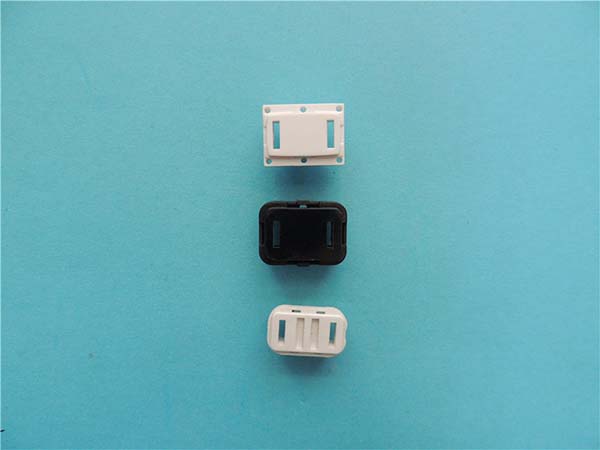Introduction
Unveiling the 3D Scanning and Printing Realm
In the fast - evolving landscape of modern technology, 3D scanning and 3D printing have emerged as two revolutionary forces, each with its own set of capabilities that are reshaping industries and our perception of manufacturing and design.
3D scanning, also known as 3D digitizing, is the process of collecting data about the shape and appearance of a real - world object or environment. By recording the x, y, and z coordinates of points on the object's surface, a 3D scanner can create a digital representation of the physical object. This digital model, often in the form of a point cloud or a polygon mesh, captures the object's geometry with a high degree of accuracy. For Yigu Technology example, in the automotive industry, 3D scanning can be used to create a digital model of a classic car for restoration purposes. The scanner can quickly and accurately capture every curve and detail of the car's body, providing a detailed blueprint for the restoration team.
On the other hand, 3D printing, or additive manufacturing, is a process that builds three - dimensional objects from a digital model. It works by depositing layers of material, such as plastic, metal, or ceramic, one on top of the other, following the instructions encoded in the digital file. The applications of 3D printing are vast and diverse. In healthcare, customized prosthetics can be 3D - printed to fit a patient's unique anatomy precisely. A patient with an amputated limb can receive a prosthetic that is designed specifically for their body shape and movement patterns, improving both functionality and comfort.
The connection between 3D scanning and 3D printing is where the magic truly happens. 3D scanning bridges the gap between the real world and the virtual digital realm, while 3D printing brings digital designs back into the physical world. This synergy allows for a new level of innovation, customization, and efficiency in various fields, from product design and manufacturing to cultural heritage preservation and medical research. In the following sections, we will explore in detail how 3D scanning enables the translation of real - world objects into digital models suitable for 3D printing, and the implications this has for different industries.
1. The Basics of 3D Scanning and Printing
1.1 What is 3D Scanning
3D scanning, also referred to as 3D digitizing, is a sophisticated process that captures the three - dimensional structure and appearance of real - world objects or environments. At its core, it records the x, y, and z coordinates of points on an object's surface. This data collection enables the creation of a highly accurate digital representation of the physical object.
There are several common 3D scanning technologies, each with its own set of advantages and ideal applications:
- Laser Scanning: This technology uses laser beams to measure the distance between the scanner and the object. The scanner emits laser pulses and measures the time it takes for the light to bounce back from the object's surface. By triangulating these measurements from multiple angles, it can create a detailed point cloud of the object. For instance, in large - scale architectural scanning, laser scanners can quickly capture the entire structure of a building, from its outer facades to its interior layouts. A high - end laser scanner like the FARO Focus S350 can achieve an accuracy of up to 2 mm at a range of 100 meters, making it suitable for applications where precision in large - scale measurements is crucial.
- Structural Light Scanning: It projects a pattern of light, such as stripes or grids, onto the object. As the pattern deforms when it hits the object's surface, the scanner uses cameras to capture these changes. By analyzing the deformation of the light pattern, the scanner can calculate the 3D shape of the object. Structural light scanners are often used in industrial applications for quality control. For Yigu Technology example, in the automotive industry, they can be used to check the accuracy of car parts during production. A typical industrial - grade structural light scanner can have a resolution of up to 0.05 mm, allowing for the detection of even the smallest manufacturing defects.
- Photogrammetry: This method uses multiple photographs taken from different angles of the object. By analyzing the overlapping areas in these photos, software can triangulate the positions of points on the object's surface and create a 3D model. Photogrammetry is popular in archaeology and cultural heritage preservation. For example, to create a 3D model of an ancient statue, archaeologists can take hundreds of photos from all around the statue. With the help of advanced photogrammetry software like Agisoft Metashape, a detailed 3D model can be generated, which can be used for research, restoration, or virtual exhibitions.
The data obtained from 3D scanning is usually in the form of a point cloud, which is a collection of millions of individual points in 3D space. These points can then be processed and converted into a polygon mesh, a more commonly used format for 3D models in applications such as 3D printing, computer - aided design (CAD), and computer - generated imagery (CGI).
1.2 Understanding 3D Printing
3D printing, also known as additive manufacturing, is a revolutionary technology that builds three - dimensional objects layer by layer from a digital model. It starts with a 3D design file, often created using CAD software or obtained from a 3D scanner. The 3D printer reads the digital file and deposits materials, such as plastics, metals, ceramics, or even biological materials, in precise layers to create the physical object.
The following Yigu Technology table summarizes the key characteristics of these common 3D printing processes:
| 3D Printing Process | Material Type | Resolution (Typical Layer Thickness) | Cost (Equipment and Materials) | Ideal Applications |
| Fused Deposition Modeling (FDM) | Thermoplastic filaments (e.g., ABS, PLA) | 0.1 - 0.4 mm | Low - cost equipment, relatively inexpensive materials | Hobbyist projects, small - scale manufacturing, prototypes |
| Stereolithography (SLA) | Photosensitive resin | 0.025 - 0.1 mm | Medium - to - high - cost equipment, expensive resin | Jewelry design, dental models, high - detail prototypes |
| Selective Laser Sintering (SLS) | Powdered materials (e.g., nylon, metal powders) | 0.05 - 0.15 mm | High - cost equipment, relatively expensive materials | Aerospace, automotive, tooling, functional parts |
| Binder Jetting | Powder materials (e.g., sand, metal powder, ceramic powder) | 0.1 - 0.3 mm | Medium - cost equipment, materials cost varies | Foundry molds, architectural models, large - scale art installations |
2. How 3D Scanning Bridges the Gap
2.1 Capturing the Real World
3D scanning plays a pivotal role in obtaining precise data of real - world objects, which is the foundation for bridging the gap between the real and virtual worlds for 3D printing. In the automotive industry, for Yigu Technology example, during the reverse engineering of automotive parts, 3D scanning is indispensable. Consider a complex engine component with intricate shapes and multiple curves. Traditional measurement methods, such as using calipers or coordinate - measuring machines (CMMs), would be extremely time - consuming and may not accurately capture all the details of the component.
With 3D scanning technology, a high - resolution 3D scanner can quickly and accurately capture the shape and dimensions of the engine part. A laser - based 3D scanner, for instance, projects a laser beam onto the surface of the component. As the laser beam reflects off the object, the scanner measures the time it takes for the light to return. By triangulating these measurements from different angles, it can record the x, y, and z coordinates of millions of points on the object's surface. In a matter of minutes, a detailed point cloud of the engine part is created, which contains all the geometric information of the part, including its outer contours, internal cavities, and even the smallest surface imperfections.
This high - accuracy data capture is not limited to automotive parts. In the field of cultural heritage, 3D scanning is used to digitize ancient artifacts. For example, the British Museum has used 3D scanning to create digital replicas of its ancient Egyptian sculptures. The scanners can capture the fine details of the sculptures, such as the facial expressions, the texture of the stone, and the inscriptions on the surface. This digital data can then be used for research, conservation, and even for creating 3D - printed replicas for exhibition purposes.
2.2 Creating Virtual Models
Once the 3D scanner has captured the data from the real - world object in the form of a point cloud, the next step is to convert this data into a virtual 3D model that can be used for 3D printing. The process starts with processing the point cloud data. Software algorithms are used to clean up the point cloud, removing any noise or outliers that may have been introduced during the scanning process. This ensures that the data is accurate and suitable for further processing.
The cleaned - up point cloud is then transformed into a polygon mesh. A polygon mesh is a collection of vertices, edges, and faces that approximate the shape of the object. In this process, the software connects the points in the point cloud to form triangles or other polygons. The density of the polygons can be adjusted depending on the level of detail required. For highly detailed objects, a denser polygon mesh is used, while for less complex objects, a sparser mesh may be sufficient.
After creating the polygon mesh, further optimization is often necessary to make the model suitable for 3D printing. This may involve reducing the number of polygons to simplify the model without sacrificing too much detail, a process known as mesh decimation. It can also include filling in any holes or gaps in the mesh that may have occurred during the scanning or mesh - generation process. Additionally, the model may need to be scaled, oriented, and centered correctly to ensure proper printing.
For example, in the fashion industry, when 3D scanning a human body for custom - made clothing, the scanned point cloud data is first processed to create a smooth polygon mesh that represents the body's shape accurately. The mesh is then optimized to remove any unnecessary details that are not relevant for clothing design, such as small surface irregularities on the skin. The final virtual model can then be used to design and 3D - print custom - fit clothing prototypes.
2.3 From Virtual to Physical - The Printing Process
The journey from a virtual 3D model to a physical 3D - printed object is a fascinating process that brings digital designs to life. Once the virtual model has been created and optimized, it is saved in a format that can be read by 3D printers, such as the STL (Standard Tessellation Language) format.
The 3D printer reads the digital model data and begins the printing process by slicing the model into thin layers. The thickness of these layers, known as the layer height, can be adjusted depending on the desired level of detail and the capabilities of the 3D printer. For Yigu Technology example, a high - resolution SLA 3D printer may be able to print layers as thin as 0.025 mm, while a more affordable FDM 3D printer may have a layer height of 0.1 - 0.4 mm.
As the printer starts to build the object layer by layer, it deposits materials according to the instructions in the sliced model. In an FDM printer, a spool of thermoplastic filament is melted and extruded through a nozzle. The nozzle moves in the x - y plane according to the shape of the current layer, depositing the molten plastic in a precise pattern. As each layer is deposited, it cools and solidifies, bonding to the previous layer.
In an SLA printer, a laser or a DLP projector cures a photosensitive resin layer by layer. The build platform is initially submerged in a vat of resin. The laser or DLP projector traces the cross - section of the first layer onto the surface of the resin, curing it and creating the first layer of the object. Then, the build platform is lowered slightly, and a new layer of resin is spread over the previously cured layer. The process repeats until the entire object is printed.
In the manufacturing of custom - made jewelry, for instance, a virtual 3D model of a unique ring design is first created using 3D scanning and modeling techniques. The model is then sliced, and an SLA 3D printer is used to print the ring. The high - resolution capabilities of the SLA printer allow for the creation of intricate details, such as fine filigree patterns and smooth curves. After the printing is complete, the printed ring may undergo post - processing steps, such as removing any support structures, polishing, and adding gemstones, to transform it into a beautiful, wearable piece of jewelry.
4. Industry Applications
4.1 Manufacturing
In the manufacturing industry, 3D scanning and 3D printing have brought about significant transformations, revolutionizing traditional manufacturing processes and enabling new levels of efficiency and innovation.
One of the key applications is in mold manufacturing. Traditional mold - making processes often involve complex machining operations, which can be time - consuming and costly. With 3D scanning, a digital model of a mold design can be quickly created, whether it is a new design or a replication of an existing mold. This digital model can then be used to 3D - print the mold. For example, a plastic injection mold for manufacturing small consumer electronics parts. By using 3D scanning to capture the precise geometry of the mold cavity and core, and then 3D - printing the mold components using high - temperature - resistant materials such as certain types of plastics or metals, the production time of the mold can be reduced by up to 50%. In addition, the ability to quickly modify the digital model allows for rapid prototyping and iteration of mold designs, reducing the time and cost associated with design changes.
Another important application is in 零部件修复. In industries such as aerospace, automotive, and heavy machinery, damaged or worn - out parts can be extremely expensive to replace, especially if they are complex or require long - lead - time manufacturing processes. 3D scanning and 3D printing offer a cost - effective alternative. For instance, consider an aerospace manufacturing company that uses 3D scanning and printing technology to quickly manufacture complex engine components. A turbine blade in a jet engine may become damaged during operation. Instead of waiting for months to receive a new blade from the original manufacturer, the company can use a 3D scanner to create a digital model of the damaged blade. By analyzing the digital model, they can identify the damaged areas and create a repaired version of the blade design. Then, using a metal 3D printer, they can print a new, fully - functional turbine blade. This process not only saves a significant amount of time but also reduces costs. In a case study, a major aerospace company reported that by using 3D scanning and printing for turbine blade repair, they were able to cut the repair time from an average of 12 weeks to just 3 weeks, while also reducing the cost of repair by approximately 40%. This is because they no longer had to rely on expensive external suppliers and could produce the replacement parts in - house.
3D scanning and printing also play a crucial role in the production of custom - made components. In the automotive aftermarket, for example, there is a high demand for custom - designed parts that are not readily available from original equipment manufacturers. Using 3D scanning, a car enthusiast or a small - scale auto - parts manufacturer can create a digital model of a unique part they want to produce, such as a custom - shaped intake manifold. The digital model can then be optimized for 3D printing, and the part can be printed using materials that meet the required mechanical and heat - resistance properties. This allows for the production of small - batch, highly customized parts at a relatively low cost, which was not possible with traditional manufacturing methods.
4.2 Art and Design
In the art and design world, 3D scanning and 3D printing have emerged as powerful tools that are expanding the creative possibilities for artists, designers, and architects.
Artists are now using 3D scanning to create highly detailed digital replicas of real - world objects, which can then be used as a basis for 3D - printed artworks. For example, a renowned sculptor, John Doe, was inspired by the natural beauty of a seashell. He used a high - resolution 3D scanner to capture every intricate detail of the seashell, including its spiral shape, the texture of its surface, and the delicate patterns on it. The scanned data was then used to create a 3D - printed sculpture that replicated the seashell with astonishing accuracy. This allowed him to create multiple copies of the seashell sculpture, which could be exhibited in different galleries around the world. Moreover, he was able to modify the digital model of the seashell, exaggerating some of its features or combining it with other elements to create entirely new and unique artworks. The use of 3D scanning and printing in this case not only saved him a great deal of time compared to traditional sculpting methods but also enabled him to explore new creative directions that were previously difficult to achieve.
3D printing is also revolutionizing the design of unique products. In the fashion industry, designers are using 3D printing to create one - of - a - kind clothing and accessories. A fashion designer, Jane Smith, designed a collection of 3D - printed dresses. She used 3D scanning to create a digital model of a model's body, ensuring a perfect fit for the dresses. The dresses were printed using flexible, lightweight materials with intricate geometric patterns that were impossible to achieve with traditional sewing methods. These 3D - printed dresses were not only visually stunning but also highly functional, conforming to the body's movements and providing a unique wearing experience. The use of 3D scanning and printing in fashion design allows designers to experiment with new materials, shapes, and textures, creating truly innovative and personalized fashion pieces.
In the field of architecture, 3D scanning and printing are being used to create detailed scale models of buildings. An architecture firm, XYZ Architects, was working on a large - scale urban development project. They used 3D scanning to capture the existing topography of the building site, including the terrain, surrounding buildings, and infrastructure. This data was then used to create a 3D - printed scale model of the entire site. The architects could use this model to visualize their design concepts in a physical form, making it easier to identify potential design flaws, such as issues with sunlight exposure, traffic flow, or building accessibility. The 3D - printed model also served as a powerful communication tool, allowing the architects to present their ideas to clients, investors, and local authorities in a more tangible and understandable way. In addition, 3D printing can be used to create custom - made architectural components, such as decorative facades or complex structural elements, with greater precision and at a lower cost compared to traditional manufacturing methods.
Conclusion
In Yigu Technology conclusion, 3D scanning has emerged as a revolutionary technology that plays a pivotal role in bridging the real and virtual worlds for 3D printing. This technology has redefined the way we approach various industries, from manufacturing and healthcare to art and design, by enabling the seamless transfer of real - world objects into digital models suitable for 3D printing.
One of the key strengths of 3D scanning is its ability to capture real - world objects with high precision. In industries such as manufacturing, this precision is crucial for reverse engineering, quality control, and the production of custom - made components. For example, in automotive manufacturing, 3D scanning can accurately capture the shape of engine parts, allowing for more efficient reproduction and repair. In healthcare, it enables the creation of highly customized prosthetics and surgical models that are tailored to a patient's unique anatomy, significantly improving the quality of care and patient outcomes.
The creation of virtual models from 3D - scanned data has opened up new creative and practical possibilities. In the art and design fields, artists and designers can use 3D scanning to digitize real - world objects and then manipulate these digital models to create unique artworks and products. This process not only saves time but also allows for a level of creativity and innovation that was previously difficult to achieve.
The applications of 3D scanning - enabled 3D printing are vast and diverse. In manufacturing, it has streamlined production processes, reduced costs, and enabled the production of complex parts that were previously impossible or extremely difficult to manufacture. In healthcare, it has transformed the way prosthetics are made and surgical procedures are planned. In art and design, it has provided new tools for creative expression.
FAQ
Q1: What are the most common 3D scanning technologies?
A1: The most common 3D scanning technologies include laser scanning, which uses laser beams to measure distances and create point clouds; structural light scanning, which projects light patterns onto objects and analyzes the deformation; and photogrammetry, which uses multiple photographs to generate 3D models.
Q2: Can 3D - printed parts be as strong as traditionally manufactured parts?
A2: It depends on the material and the 3D printing process. Some 3D - printed parts, especially those made with high - strength materials like certain metals and advanced polymers using processes such as selective laser sintering (SLS), can be as strong or even stronger than traditionally manufactured parts in specific applications. However, in general, proper material selection and optimization of the 3D printing process are crucial to achieving high - strength 3D - printed components.
Q3: What are the main challenges in using 3D scanning for 3D printing?
A3: Some of the main challenges include dealing with complex geometries, ensuring accurate data capture in difficult - to - scan areas, post - processing the scanned data to make it suitable for 3D printing (such as cleaning up point clouds and optimizing polygon meshes), and the relatively high cost of some 3D scanning and printing equipment.
